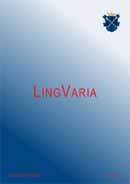Pozajęzykowe uwarunkowania średniowiecznej morfologii i składni liczebników głównych
Extra-linguistic factors of medieval morphology and syntax of cardinal numerals
Author(s): Agnieszka SłobodaSubject(s): Language and Literature Studies
Published by: KSIĘGARNIA AKADEMICKA Sp. z o.o.
Summary/Abstract: The article presents the results of a research which falls into a wide spectrum of cognitive sciences. Our results can give an explanation of the internal morphological and syntactical differentiation of cardinal numerals, as is observed in medieval Polish. Advances in neuropsychology have made it possible to determine the threshold of early perception of numerical values, which is the number four. This threshold can also be found in animals and children. Anthropological studies confirm that many “primitive” (illiterate) peoples do not express numbers higher than four with words, even if they can perform calculations on much greater values with the help of other means. These factors, as their nature is universal, have become the basis of the thesis which claims that the state observed in Old Polish, is a legacy of the preliterate era, when perception of numbers was still of concrete nature. It was not until the entry into the sphere of literate culture and the influence of Latin, that a change took place. The structure of utterance, different from the one known from the spoken language, and the use of ready-made patterns offered by Latin syntax, gradually led to the emergence of distinct morphosyntactic features of a new part of speach, the numeral.
Journal: LingVaria
- Issue Year: 2011
- Issue No: 12
- Page Range: 91-102
- Page Count: 12
- Language: Polish

